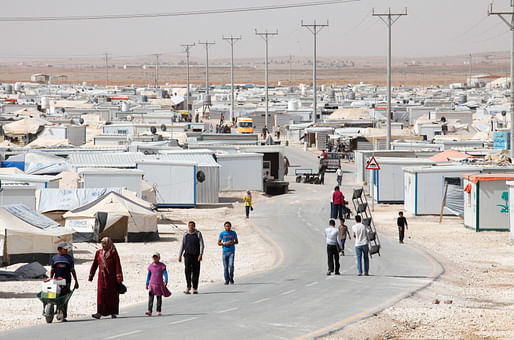

Following last week’s look at an opening for a Shop Manager at Studio Sanford Biggers, we are using this week’s edition of our Job Highlights series to explore an open position on Archinect Jobs for an Architect at Doctors Without Borders.
The role, which requires a minimum of two years’ experience, calls for an architect who will oversee the design and construction of infrastructure to support the organization’s international humanitarian missions. Responsibilities in the role can range from feasibility studies and design proposals to management of the tendering, construction, and completion process.
In return, and aside from conventional industry workplace benefits, the organization offers to cover a range of primary costs including pre-departure inductions, vaccinations, visas, transportation and accommodation in the field, and psychosocial care support before and after missions.
Why the role interests us
The opening at Doctors Without Borders offers us the opportunity to reflect on the heavy role architecture plays in humanitarianism. In recent years, our editorial has highlighted several efforts by architectural practitioners and researchers to develop typologies that can respond to the immediate needs of humanitarian organizations in emergency relief situations, including Zaha Hadid Architects’ collection of emergency shelters for the Education Above All Foundation, and an origami-inspired pop-up structure developed by researchers at Harvard University.
Zooming out to a larger scale, last month saw our editorial publish a guest op-ed highlighting the growing permanence of urban landscapes created by humanitarian architecture. Recognizing the increasingly urban characteristics of refugee camps, including scale, population density, and social services, the article argued that questions surrounding refugee camp design and camp dwellers’ rights require the considered input and guidance of architects and urbanists.
The open role at Doctors Without Borders offers one example of how architects not already affiliated with large design entities such as Zaha Hadid Architects and Harvard can still frame their careers along humanitarian lines as called for in the above op-ed. In a separate feature article from 2017, which included the perspectives of several architects involved in humanitarian work, we went beyond specific architectural solutions to instead unpack the inherent value of an architectural background in humanitarian operations.
Recognizing the heavy reliance of humanitarian missions on large multinationals, we suggested that architects can play a valuable role in safeguarding against global aid organizations losing sight of their original purpose. Through exercising what we dubbed the architect’s “art of balancing visions,” designers can be crucial in maintaining communication and coordination within chaotic or fast-moving circumstances, and instilling the “needs, wishes, and cultural heritage of the communities we work within, whose voices can become distant and quiet.”

“Architects are trained coordinators, and this skill is so precious when dealing with the moving parts in the world of humanitarian design,” Carly Althoff of Journeyman International told us as part of the article. “We are also known for our ability to envision and look at problems from very unique perspectives. Therefore there is a very special role that we as architects can fill in understanding the complexities of disaster relief and aid.”
Further reading for interested candidates
Job Highlights is one of a number of ongoing weekly series showcasing the opportunities available on our industry-leading job board. Our Meet Your Next Employer profiles and interviews interesting studios with open positions currently available on Archinect Jobs, while our weekly roundups curate job opportunities by location, career level, and job description.
1 Comment
Looks amazing.
Block this user
Are you sure you want to block this user and hide all related comments throughout the site?
Archinect
This is your first comment on Archinect. Your comment will be visible once approved.